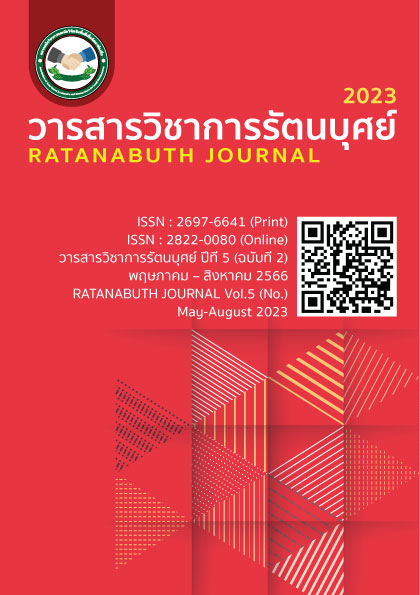The influence of the Buddhist way of life led to the emergence of Thai dancing arts and culture The influence of the Buddhist way of life led to the emergence of Thai dancing arts and culture
Main Article Content
Abstract
Buddhism is considered a religion that has been important to the lives of Thai people in all regions for many centuries, affecting the lives of Thai people since the past. Living in modern times focuses on the pursuit of happiness in life. Whether it's physical happiness and mental happiness. However, the way of living according to Buddhist principles has affected the birth of Thai dancing arts that focus on physical and mental happiness in various ways. Depending on the context, different areas of the region of Thailand lead to the emergence of artistic and dramatic arts that the author will present, consisting of the northern region, which is a candle dance to offer to the Lord Buddha according to the views of the Lanna Thai people, etc. The eastern region north It is a Mor Lam Klon performance. In that verse, you will find the verse that says the worship of superhuman beings in the form of praying for blessings from the sacred things that belong to Buddhism, such as the Buddha, the Noble Sangha in Buddhism. traditional performing arts Concealed the essence of religious teachings and the southern region as a manorah, which is both expressed as a story and based on beliefs that are rituals. In a case study of the Sunday Buddhist Study Center led by Phrakhru Adulvirakhom, the abbot of Chonlatharawat Temple, Tanyongmat Subdistrict, Rangae District, Narathiwat Province, etc.
Article Details

This work is licensed under a Creative Commons Attribution-NonCommercial-NoDerivatives 4.0 International License.
References
กชวรรณ ปักครึก. (2561). ลิเกชาดกศิลปะการแสดงดั้งเดิม แฝงสาระคำสอนทางศาสนา.สืบค้นเมื่อ 4 พฤษภาคม 2566 จาก https://www.pptvhd36.com/news/74257.
นาฏศิลป์ไทย.(2556). นาฏศิลป์ไทยสี่ภาค. สืบค้นเมื่อ 4 พฤษภาคม 2566 จาก http://lovenattasinthai.blogspot.com/p/blog-page_44.html.
ป.ปยุตโต. (2527). พุทธศาสนากับชีวิตและสังคม. สืบค้นเมื่อ 6 พฤษภาคม 2566 จาก https://www.watnyanaves.net/en/book-full-text/315.
พระมหาพิพัฒพงศ์ ฐิตธมฺโม. (2563). หลักพุทธธรรมกับการดำเนินชีวิตในยุคปัจจุบัน. วารสารครุศาสตร์ปริทรรศน์ฯ,7(2),325-334.
ศราวุธ จันทรขำ และ อนุกูล โรจนสุขสมบูรณ์.(2563). นาฏกรรมกับพระพุทธศาสนาในล้านนา.วารสารมหาวิทยาลัยนราธิวาสราชนครินทร์ สาขามนุษยศาสตร์และสังคมศาสตร์,7(2),16-32.
ศูนย์ศึกษาพระพุทธศาสนาวันอาทิตย์. (2566). มโนราห์ ศูนย์ศึกษาพระพุทธศาสนาวันอาทิตย์ (วัดชลธาราวาส). สืบค้นเมื่อ 19 มิถุนายน 2566 จาก https://narathiwat.m-culture.go.th/th/db_100_narathiwat_11/205083?embed=true.
หมอลำมลิวัลย์. (2556). กลอนลำไหว้ครูทางสั้น+เดินดง: หมอลำมลิวัลย์. สืบค้นเมื่อ 19 มิถุนายน 2566 จาก https://th-th.facebook.com/klonlum/posts/470201223064078/.
sanook.com. (2560). ศีล 5 มีอะไรบ้าง ทำไมจึงต้องรักษาศีล 5 ประโยชน์ของการรักษาศีล. สืบค้นเมื่อ 20 มิถุนายน 2566 จาก https://www.sanook.com/horoscope/98197/.


